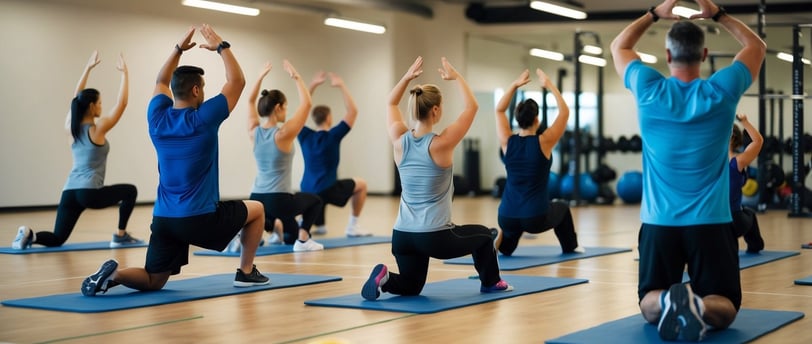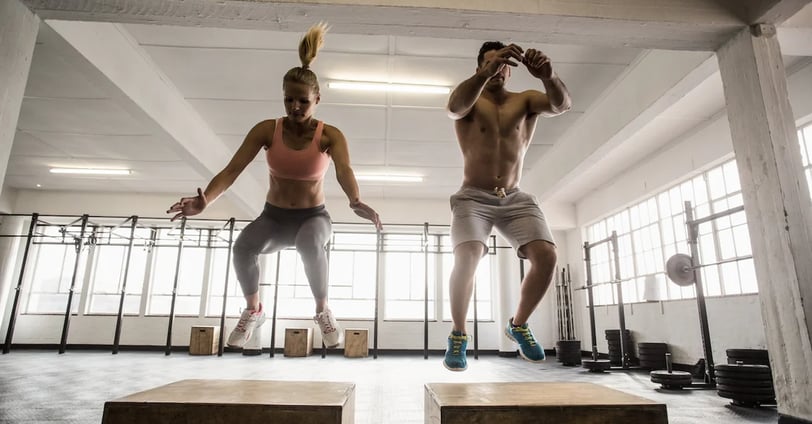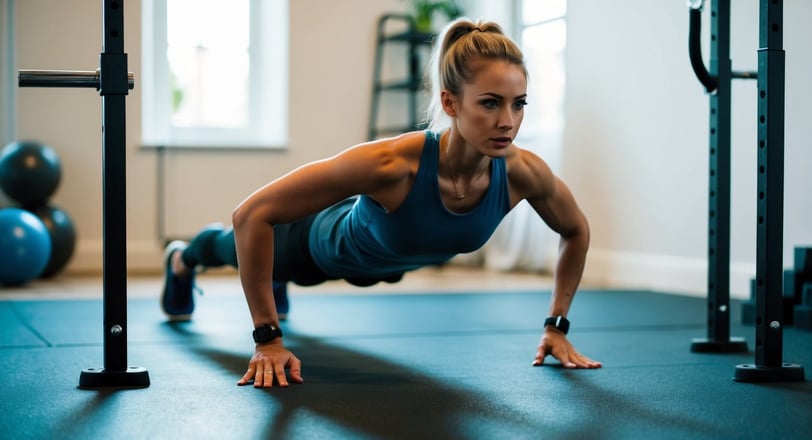How Can I Build Upper Body Strength Without a Spotter? Safe Training Techniques for Beginners
Learn how to develop upper body strength independently with safe training methods. Perfect for beginners looking to boost their fitness journey.
FITNESS
3/17/20255 min read


How Can I Build Upper Body Strength Without a Spotter? Safe Training Techniques for Beginners to Get Stronger on Your Own
Building upper body strength doesn't require a gym buddy or spotter. Many people worry they can't train safely alone, but that's simply not true. With the right approach, you can develop impressive strength by yourself.
You can build significant upper body strength without a spotter by using techniques like dumbbell exercises, resistance bands, and machine-based training that provide natural safety mechanisms. These methods allow you to push yourself while maintaining control. For beginners especially, focusing on proper form rather than heavy weights creates the foundation for long-term progress.
Starting your strength journey alone might feel intimidating, but it's quite liberating once you get going. I remember feeling nervous about training without help, but discovering these safer alternatives opened up a whole new world of fitness possibilities for me. With some affordable equipment like a quality set of resistance bands (I love the FitBeast set on Amazon for about £25), you can transform your training today.
Key Takeaways
Select exercises with built-in safety features like dumbbells, resistance bands, and machines to train effectively without spotters.
Master proper technique with lighter weights before progressing to heavier loads to prevent injuries.
Incorporate safety equipment such as adjustable benches and power racks with safety pins for more advanced solo training.
Laying the Foundations: Safety and Equipment
Safety and proper equipment are essential when building upper body strength on your own. These fundamentals will help you train effectively while minimising injury risks.
Understanding the Importance of Safety in Solo Lifting
Without a spotter, you need to create a secure training environment. Safety should always be your top priority when lifting alone.
Start with proper warm-ups to prepare your muscles and joints. This reduces injury risk and improves performance during your workout.
Learn correct form before adding heavy weights. Poor technique can lead to serious injuries, especially without someone watching your form.
Never lift to absolute failure when training alone. Always leave 1-2 reps "in the tank" so you can safely complete your set without struggling.
Key safety measures for solo training:
Set up safety bars or pins at appropriate heights
Use equipment with built-in safety features
Know when to use lighter weights
Have a mobile phone nearby in case of emergencies
Choosing the Right Equipment for Safe Training at Home
The right equipment makes solo training both effective and safe. A power rack or squat rack with adjustable safety pins is worth the investment. These catch the bar if you can't complete a rep.
Spotter arms are brilliant additions to your home gym. They attach to racks and act as mechanical spotters, preventing the bar from falling on you.
Weight collars are non-negotiable safety items. They keep weights secure on barbells, preventing plates from sliding off during exercises.
Consider a Smith machine for certain exercises. While it limits natural movement, it provides guided support for beginners working without spotters.
Quality lifting gloves improve your grip, reducing the chance of weights slipping. I've found these Premium Lifting Gloves particularly helpful when doing heavy pulls.
Fundamentals of Upper Body Training Without a Spotter
Training your upper body safely without a partner is entirely possible with the right approach. You'll need to focus on proper technique and create a balanced plan that works all muscle groups effectively.
Mastering Proper Form and Control
Proper form is your best friend when lifting alone. Always start with weights you can control completely through the full range of motion. I remember when I first began solo training - I'd rather do perfect push-ups than wobbly bench presses with too-heavy weights!
For bench pressing without a spotter, consider using the "roll of shame" technique. If you can't complete a rep, slowly lower the bar to your chest, then roll it down to your hips where you can sit up. A quality bench like the York Fitness Bench (£89.99 on Amazon) provides the stability you need.
Dumbbell alternatives are brilliant for solo lifting. They allow natural movement patterns and you can simply drop them safely if needed. Focus on slow, controlled movements rather than jerky reps.
Developing a Balanced Workout Routine
Your training programme should target all upper body muscles to prevent imbalances. Include pushing exercises (bench press, push-ups, shoulder press) and pulling movements (rows, pull-ups).
Start with higher reps (10-15) using moderate weights before progressing to heavier loads. I've found this approach builds a solid foundation while keeping things safe.
Progressive overload is key to growth, but make it gradual. Add small weight increments or an extra rep each week. My favourite training split includes:
Monday: Chest and triceps
Wednesday: Back and biceps
Friday: Shoulders and core
For beginners, the Opti Dumbbell Set (£39.99 on Amazon) offers adjustable weights perfect for home training. Remember that consistency trumps intensity when you're training alone. A modest workout you complete safely is better than a risky session that ends in injury.
Enhancing Performance & Preventing Injuries
Building upper body strength safely means paying attention to both preparation and technique. These elements help you avoid setbacks while making consistent progress.
Effective Warm-Up Strategies for Strength Training
Your warm-up isn't just a box to tick—it's essential for injury prevention and better workouts. Start with 5-10 minutes of light cardio to increase blood flow to your muscles.
Dynamic stretches work brilliantly for upper body preparation:
Arm circles (small to large, 10 in each direction)
Shoulder rolls (forward and backward, 10 each way)
Torso twists (10-15 each side)
I always notice my chest press feels much stronger after proper shoulder mobility work! Consider adding resistance band pull-aparts—they've been brilliant for activating my upper back before pushing exercises.
For chest muscles specifically, try a few wall push-ups to engage the right movement pattern before loading with weight.
Techniques for Gradual Progression and Muscle Activation
Listen to your body when increasing weights. The "10% rule" works well—don't add more than 10% weight from one week to the next.
Focus on mind-muscle connection by really thinking about the muscles you're targeting. For triceps work, imagine squeezing a small ball between your arm and side to maintain proper form.
Track your progress in a notebook or fitness app like Strong (I use this religiously and it's transformed my training). The Avafit Adjustable Dumbbells (on Amazon UK) are brilliant for home training, allowing gradual weight increases without needing multiple sets.
Proper rest is non-negotiable. Your muscles grow during recovery, not during training. Aim for 48 hours between training the same muscle groups.




